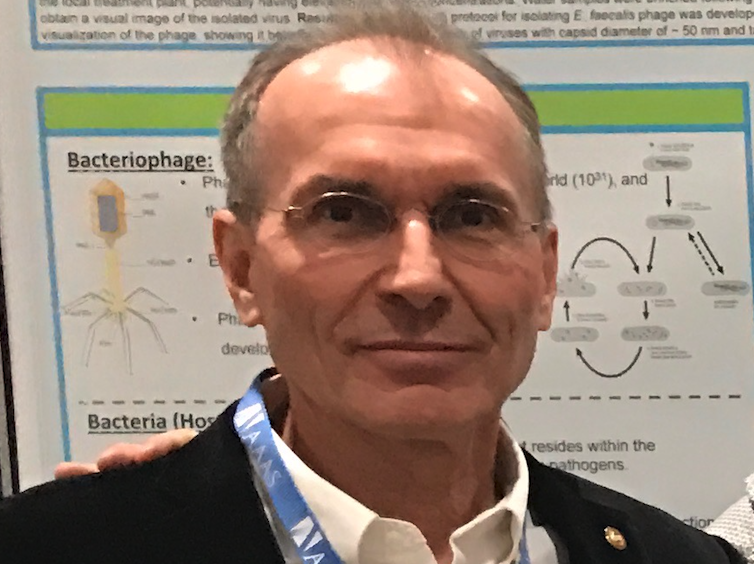Below is a summary of the abstract you submitted. Presenting author(s) is shown in bold.
If any changes need to be made, you can modify the abstract or change the authors.
You can also download a .docx version of this abstract.
If there are any problems, please email Dan at dar78@pitt.edu and he'll take care of them!
This abstract was last modified on May 1, 2018 at 3:47 p.m..

Enterococcus faecalis is a Gram-positive bacterium that commonly inhabits the gastrointestinal tracks of humans and animals. A minority of strains are pathogenic and the emergence of drug-resistant strains is a growing health crisis. To address this crisis, the search for alternative treatments like bacteriophage (phage) therapy has been revitalized. In this study, a lytic E. faecalis bacteriophage was isolated from an in-flow water sample collected at a local wastewater treatment plant (WWTP). Transmission electron microscopy (TEM) and whole-genome sequencing showed that enterophage phiNASRA1 belongs to the Siphoviridae family of double-stranded DNA viruses. The phage is approximately 250 nm in length and its complete genome (40,139 bp, 34.77% GC) encodes 60 putative proteins. It demonstrated a short latent period (~20 min) and a high lytic efficiency (97.52%) using a streptomycin-resistant E. faecalis as the host. A phylogenetic comparison of phiNASRA1 with 13 closely related Enterococcus phages, from wastewater and sewage collected from municipal, hospital and agricultural environments spanning five countries, indicated that these phages were widely distributed and recalcitrant to spatial and temporal turnover. The phage’s narrow host range, short latent period and high lytic efficiency suggest that phiNASRA1 would be a promising candidate for the development of a phage therapy.




